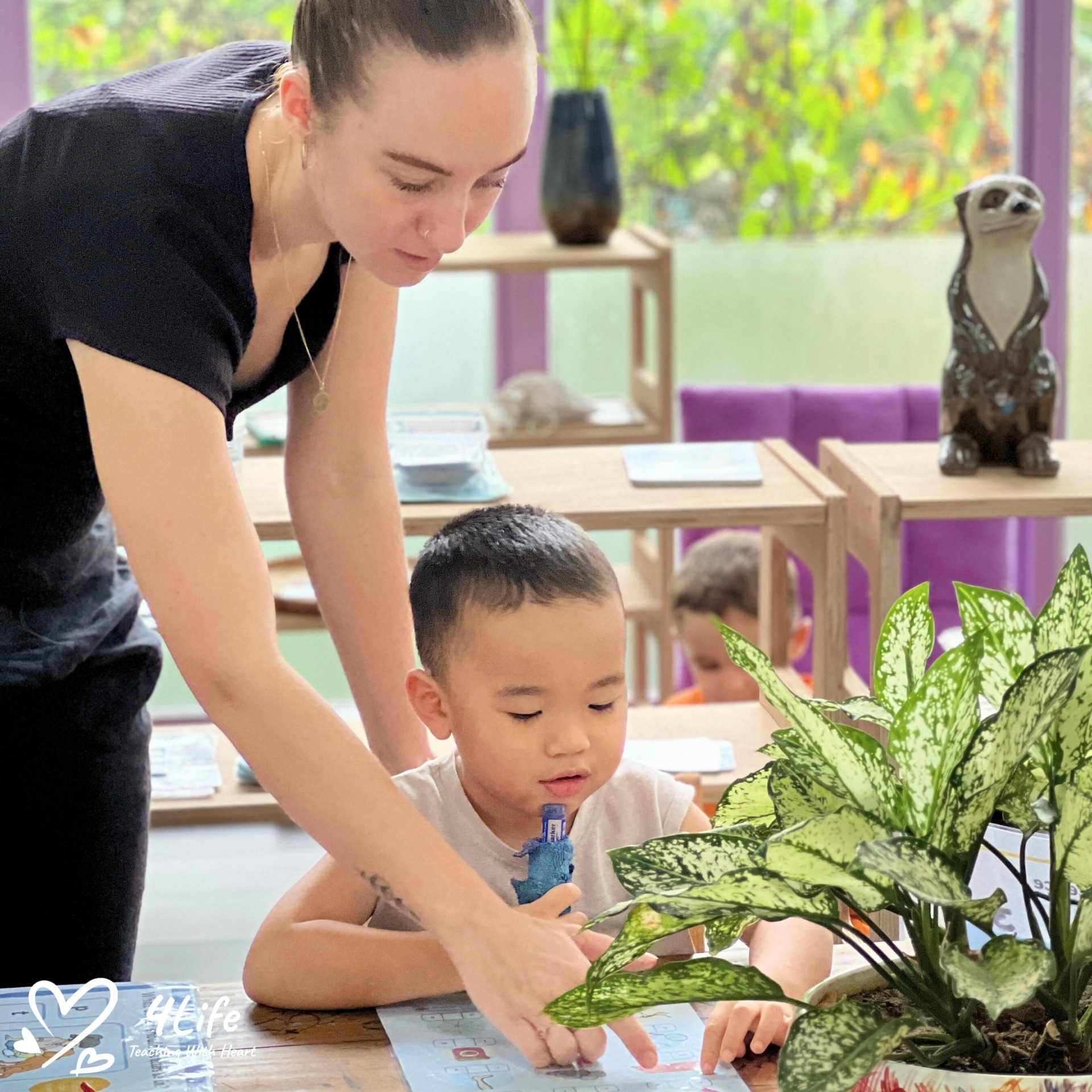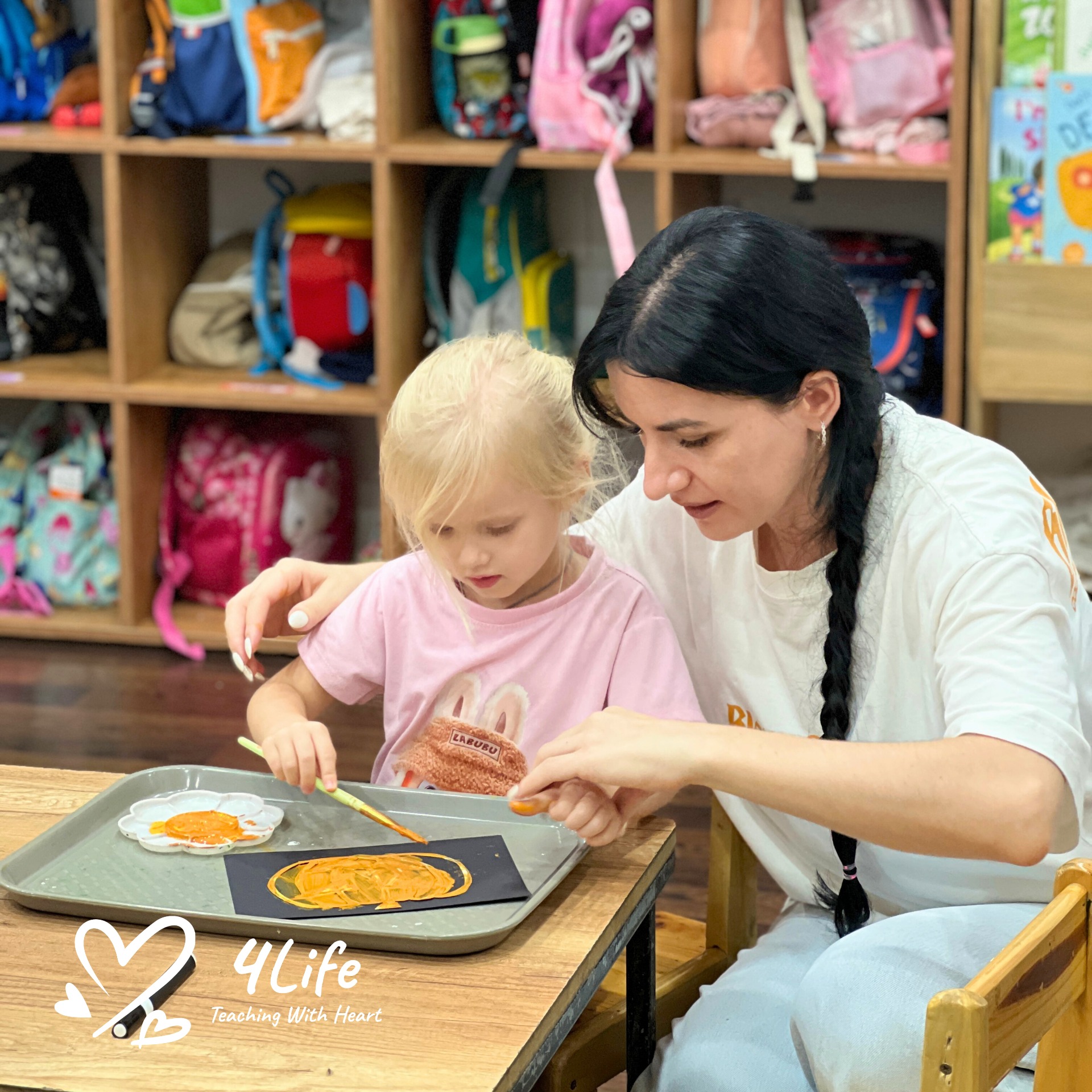Managing screen time is more than just setting limits – it’s about creating a balanced environment where children thrive through both digital discovery and real-world experiences. Let’s find out with 4Life Education how to use technology wisely, support healthy development, and help your child grow into a thoughtful, curious learner. It starts at home.
The reality of screens in early childhood
In today’s digital age, screens are everywhere. From smartphones and tablets to televisions and laptops, children are exposed to screens from infancy. It’s not uncommon to see a toddler swiping through a phone or a preschooler glued to a tablet. Devices and apps are now so intuitive that even the youngest users can navigate them with ease.

Managing Screen Time – How to guide your child
But while technology offers amazing opportunities, there’s growing concern among educators and parents alike. Are screens replacing face-to-face communication, imaginative play, and focused attention? Are we trading rich, hands-on learning experiences for passive consumption?
Managing screen time is now one of the most important challenges facing families. The goal isn’t to eliminate screens entirely, but to introduce them thoughtfully, with purpose and boundaries that protect children’s development.
The role of the parent as a model
Children learn by watching us. From their earliest days, they copy the behaviors they see – especially from their parents. If your child constantly sees you on your phone, they will naturally want to do the same.
Reflect for a moment:
– Are you checking your messages during meals?
– Do you scroll through social media while playing with your child?
– Are phones or tablets always within reach, even during family time?
These small habits send powerful messages. When we model constant digital distraction, we normalize short attention spans. We show children that digital connection matters more than real-life presence. Over time, this can lead to attention challenges and even reduced emotional connection.
Managing screen time starts with managing our own habits. Consider setting screen-free zones or times – like during meals, bedtime routines, or outdoor play. Put devices away when spending quality time with your child. These boundaries help restore presence and connection.
Starting screen time the right way
If your child is under four years old, it’s best to delay introducing digital devices as much as possible. Babies and toddlers need concrete experiences: touching, building, climbing, listening, talking, and observing. These are the foundations of brain development.

Starting screen time the right way
When your child reaches four or five years old, you can begin introducing screen time in a thoughtful, guided way. It’s not about handing over a device, but teaching your child how to use it as a tool for learning, communication, and creativity.
Here are some key steps for getting started:
– Choose the right device: Use a sturdy smartphone or tablet that is safe and child-friendly.
– Show, don’t just tell: Demonstrate how to use the device in simple ways. Let your child see it as a tool, not a toy.
– Start slow: Limit initial use to short, planned sessions – perhaps 15–30 minutes per day.
– Stay involved: Sit with your child, explore together, and talk about what you see.
Smart uses for screen time
When managed well, screen time can enhance your child’s natural curiosity and learning. The key is to link it with real-life experiences, emotions, and imagination.
Here are several ways to make screen time meaningful:
– Photo exploration: Let your child view family pictures or take their own during nature walks. This builds storytelling and observation skills.
– Video chats: Help your child connect with distant relatives or friends through video calls. It nurtures emotional bonds.
– Educational videos: Search together for clips that explain topics your child is interested in. For example, “Let’s see how baby turtles find the ocean.”
– Interactive games: Choose apps with simple puzzles or matching games that involve colors, shapes, or animals.
– Music and movement: Play favorite songs and dance together. Let your child explore music by themselves too.
– Storytelling: Make up silly stories and record them together. This builds creativity and gives children a sense of ownership.
By pairing screen time with discovery, family connection, and conversation, you turn a potentially passive activity into one that supports growth.
Setting limits that stick
Managing screen time also means setting clear boundaries that your child can understand. Here are some tips to help you create healthy screen habits:
– Set a daily time limit: Choose what works for your family – 30 minutes, 1 hour, or 2 short sessions. Use a visual timer to help your child see how much time is left.
– Create screen-free zones: Keep devices out of bedrooms, bathrooms, and mealtimes. These spaces should be reserved for rest, privacy, and connection.
– Use routines: Embed screen time into your schedule so it’s predictable. For example, “You can watch your show after lunch and before nap time.”
– Give choices within limits: Let your child choose what to watch or play within your approved list. For example, “You can choose between these two apps today.”
– Be consistent: Stick to your boundaries, even when your child protests. Predictability creates security.

Setting limits that stick
Remember that screens are designed to be engaging – your child’s frustration when it’s time to turn off the device is not misbehavior, but a natural reaction. Stay calm and firm, and offer alternative activities to help ease the transition.
Encouraging real – world experiences
Children don’t need digital entertainment to be engaged. In fact, when screens are limited, children often become more creative, independent, and focused.
Here are simple, screen-free activities that spark imagination and learning:
– Building with blocks or natural materials.
– Drawing, painting, or coloring.
– Reading together.
– Playing dress-up or make-believe games.
– Helping with cooking or simple chores.
– Spending time outdoors – walking, digging, collecting leaves.
– Listening to stories or music without visuals.
These kinds of experiences support emotional regulation, problem-solving, physical coordination, and social skills – areas where screens can never replace real-world interaction.
Preparing for school readiness
Teachers across the world are noticing a growing trend: children who spend too much time on screens are arriving at school with shorter attention spans, less interest in books, and difficulty engaging in group learning. Managing screen time is a direct investment in your child’s readiness for school and lifelong learning.

Preparing for school readiness
By helping your child build a strong foundation in communication, concentration, and self-regulation, you prepare them for success in more structured environments.
Creating a family screen plan
Managing screen time becomes easier when the whole family is involved. Create a simple screen plan that outlines:
– What devices are okay to use.
– How much time is allowed each day.
– When and where screens are not allowed.
– Approved shows, games, or apps.
– Family rules for digital etiquette (e.g., “no phones at dinner”).
Involve your child in the process. Use a chart, stickers, or drawings to help them remember the rules. Celebrate days when the plan is followed with praise or small rewards like extra story time or a family game night.
Supporting attention and focus
One of the biggest dangers of too much screen time is reduced attention span. Constantly switching between videos, apps, and games trains the brain to expect instant reward and novelty.
You can counter this by:
– Reading long stories and talking about them.
– Doing activities that require steps or patience, like puzzles or baking.
– Encouraging quiet play with open-ended toys.
– Offering plenty of downtime without stimulation.
These habits help children develop the ability to concentrate, follow instructions, and stick with a task – all essential life skills.

Supporting attention and focus
Managing screen time is not about saying “no” to technology – it’s about saying “yes” to your child’s whole development. With thoughtful planning, strong role modeling, and meaningful limits, you can help your child explore the digital world without losing sight of what matters most: connection, creativity, curiosity, and character. When families take an active role in managing screen time, screens become a tool for learning—not a substitute for living.








0 Comments